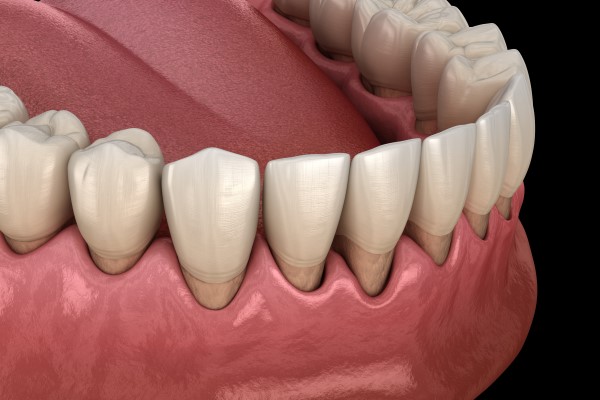How a Gingivectomy Procedure by a Periodontist Can Help Treat Gum Disease

A gingivectomy is a common procedure performed by a periodontist (a dentist who deals with gums and the supporting structures of teeth) primarily to treat gum disease. Periodontists may recommend a gingivectomy for patients that have signs of a more severe form of gum disease that may put teeth in jeopardy if left untreated. This article discusses the gingivectomy procedure specifically for the purpose of treating gum disease.
How a periodontist can treat gum disease with a gingivectomy
A gingivectomy is a generally safe and minimally invasive in-office procedure performed by periodontists. Learning more about the procedure can help calm any anxieties that may exist before your visit. The following overview explains what a gingivectomy is and when a periodontist may recommend it to treat gum disease.
What is a gingivectomy?
A gingivectomy, also called gum contouring, involves removing and reshaping gum tissue that is infected and inflamed due to gum disease. A gingivectomy may also be performed for cosmetic reasons, such as to address a gummy smile. A gingivectomy is generally recommended when diseased gum tissue begins to erode or create deep gum pockets between teeth.
How is a gingivectomy performed?
A gingivectomy is a minimally invasive procedure. However, it is a minor surgical procedure, so a local anesthetic is typically required. After administering the anesthetic, the periodontist numbs the gums to further minimize any discomfort. Gum tissue is then reshaped and diseased gum tissue is removed as necessary. The periodontist may place a putty-like material over the gum line to protect them during the healing process.
What to expect after a gingivectomy
Most patients recover within a week after the procedure. Patients are encouraged to eat a soft diet for a few days and avoid foods and drinks that may increase the risk of irritation or infection, such as those that contain sugar. Good oral hygiene and anti-inflammatory medication can aid the healing process, as well.
When is a gingivectomy performed?
A gingivectomy may be necessary if gum disease cannot be adequately treated through less invasive treatments such as antibiotics or scaling and root planing. A periodontist can assess the severity of the patient’s gum disease to determine the best course of action. If a gingivectomy is the best solution, then a follow-up visit is scheduled and the periodontist can provide detailed preparation instructions to follow.
What are the benefits of a gingivectomy?
Gum disease that is left untreated can continually worsen and cause bone loss in the jaw. The gum pockets can continue to get deeper and the gum recession can get worse. This eventually leads to the loss of teeth. A gingivectomy can help the gums heal after gum disease and reverse the symptoms permanently. Ideally, the gums reattach to the tooth roots after the procedure to provide long-term and secure support for teeth.
Is a gingivectomy procedure necessary?
A gingivectomy procedure may be necessary to treat periodontal disease. In other cases, it may not be a necessary procedure, particularly if it is used for cosmetic purposes, such as to fix a smile that reveals too much of the gums. It is important to determine all treatment options and weigh the pros and cons of each treatment option with a dental professional during a consultation visit.
How is a gingivectomy different from a gum graft procedure?
A gum graft procedure is a way to treat symptoms of periodontal disease. Most notably, a gum graft can treat gum recession along the gum line. A gingivectomy can also help treat gum recession, but it may also involve the removal of diseased gum tissue. Additionally, a gum graft procedure is rarely performed for cosmetic purposes, whereas a gingivectomy is often a great way for patients to achieve an even smile that shows the appropriate amount of the tooth crowns, addressing issues such as short teeth or a gummy smile.
What are the risks of leaving gum disease untreated?
Gum disease, especially a severe form of gum disease that is known as periodontitis, can weaken the gums and jawbone. The symptoms of gum disease can eventually lead to the loss of teeth and painful symptoms related to the tooth roots being exposed. A gingivectomy is a way to treat gum disease and help reverse the symptoms caused by periodontitis.
Contact us today for gum disease treatment
Our dental office offers gingivectomy treatment, in addition to other forms of periodontal disease treatment. To learn more about your treatment options for gum disease, contact us today and set up a convenient time for a visit.
Request an appointment here: https://corderoperiodontics.com or call Rafael E. Cordero, DDS PA at (561) 763-9221 for an appointment in our Palm Beach Gardens office.
Check out what others are saying about our dental services on Yelp: Periodontics in Palm Beach Gardens, FL.
Recent Posts
Periodontal health goes beyond periodontal treatment at the dentist's office and a consistent oral care routine. Increasingly, research is shedding light on the intricate connection between nutrition, lifestyle, and periodontal health.In this post, we explore the integration of nutrition and lifestyle into periodontal treatment, highlighting the transformative impact that it can have on preventing and managing…
Periodontal treatment from a periodontist is a great way to address a range of gum and jawbone concerns. They can also treat issues like missing teeth. This review discusses the various treatment options that are available for patients who consult a periodontist and highlights the signs that indicate a need to visit this specialist.Popular treatment…
A periodontist will examine your complete medical and dental history on your first visit to the office. This is to check if you react to specific medications and have any pre-existing disorders impeding your dental care. Your periodontist will then perform a comprehensive gum examination to look for signs or symptoms of illness.In certain situations,…
Part of having good oral health is avoiding periodontal disease and maintaining healthy gums. Unfortunately, gum disease is a common issue that people have, though it is preventable. You can take everyday steps to avoid problems with your gums. If you neglect these needs, you can experience severe consequences. You should understand periodontal disease and…


